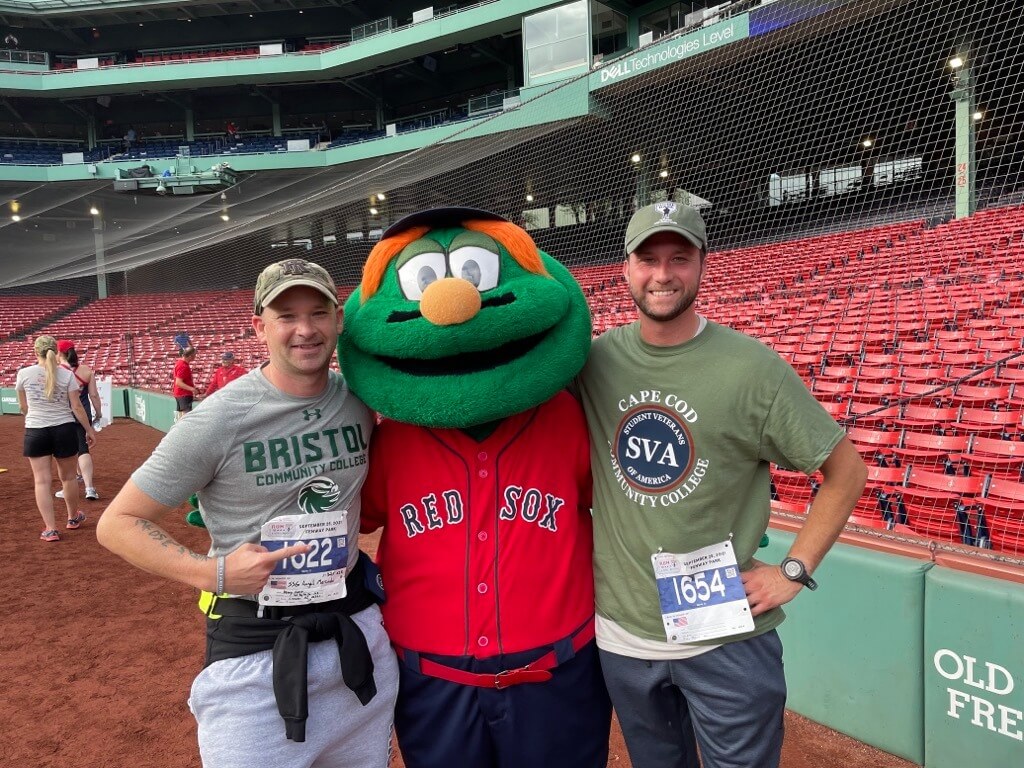Capt. Reilly J. Nuckel, of the 108th Wing of New Jersey Air National Guard, searched online last summer for resources for reservists and guardsmen returning to school.
The graduate student never expected to become president of the Student Veterans of America (SVA) chapter at Massachusetts Institute of Technology. Yet, student veterans at MIT chose him as president in May. So, he’s been leading the chapter to help other students find resources and build relationships.
“We want to provide support,” the drill-status guardsman said. “We also want to have a good time effectively building friendships.”
SVA has 1,500 chapters at universities and community colleges that connect with school leaders to advocate for and holistically assist student veterans.
Army Reserve veteran Josh Maloney started an SVA chapter at Cape Cod Community College, then another at Massachusetts Maritime Academy. He’s now enrolled at Southern New Hampshire University and active in the chapter there.
Maloney said he believes in SVA because of the educational support and access to essential information for veterans. He said it can be hard for veterans and universities to discover, understand and apply the benefits and resources available to service members who return to school.
However, Maloney has seen more than once how SVA staff and chapters help students explore benefits, determine how to be paid as a student or how to receive health care assistance.
At MIT, the university has included its SVA chapter in the process of finding the next university president. Veterans have shared their perspective on the search through the SVA chapter. Moreover, the MIT chapter partnered with the institute’s administration earlier this year to create the Office of Student Veteran Success.
RELATED: How-to Tell if a College is Military-Friendly School
Liam Gale, who was an Air Force reservist before becoming program administrator in that office, partners with SVA. He actively connects with administration staff to collaborate on assistance for students. Whenever he can, he tells stories to illustrate a veterans’ mindset during higher education.
Both Gale and Nuckel said when a deployment occurs during a semester, that change in location and responsibilities stimulates additional needs – both academic and administrative – as the individual prepares for deployment.
In response, Gale said some universities, such as North Dakota State University or University of Nebraska-Lincoln, created pre-deployment checklists for students.
Items on the checklist include:
- The process for withdrawing from university housing
- Mail forwarding
- Seeking a refund for textbooks or tuition
- Keeping a university email account active
- Sending a copy of activation orders to the appropriate university office.
SVA also works with Gale to build veterans’ camaraderie through events and programs.
“Bringing everybody together with fun things to do and developing the community for veterans is a priority,” Nuckel added.
Advice from SVA members
Part of that community for Nuckel includes giving advice about returning to campus. He and other student veterans with the SVA chapter respond to emails and build relationships with incoming students.
1. Reach out to nearby SVA chapters
Nuckel said it’s good to hear from current student veterans about their experiences and a particular school’s resources. He said reservists and guardsmen should specifically ascertain how the program they’re considering complements the skills they’ve already developed in the military.
“Find out what makes sense,” he said, through a cost-benefit analysis and weighing passions.
2. Build a support system
Gale encouraged building a support system, even before students arrive on campus and before they have a need. He did a lot of networking on LinkedIn to build a support system ahead of time so he’d have community if he needed them.
“Don’t be afraid to ask questions and leverage your peers and student veterans organizations at your institution,” he said.
Gale invested energy and time as a student in building relationships with veterans because they are like-minded individuals building a new career and finding a purpose.
3. Find community
Even though Nuckel didn’t plan on being an SVA president last year, he’s committed to seeing veterans thrive. Some of that is planning events and letting people know the SVA is on campus.
First and foremost, he wants to form a community of veterans who encourage one another.
“You have the skills, you have the knowledge,” he often encourages veterans who are nervous about going back to school. “You deserve to be in the classroom with everybody else because of the steps you took to be there.”

